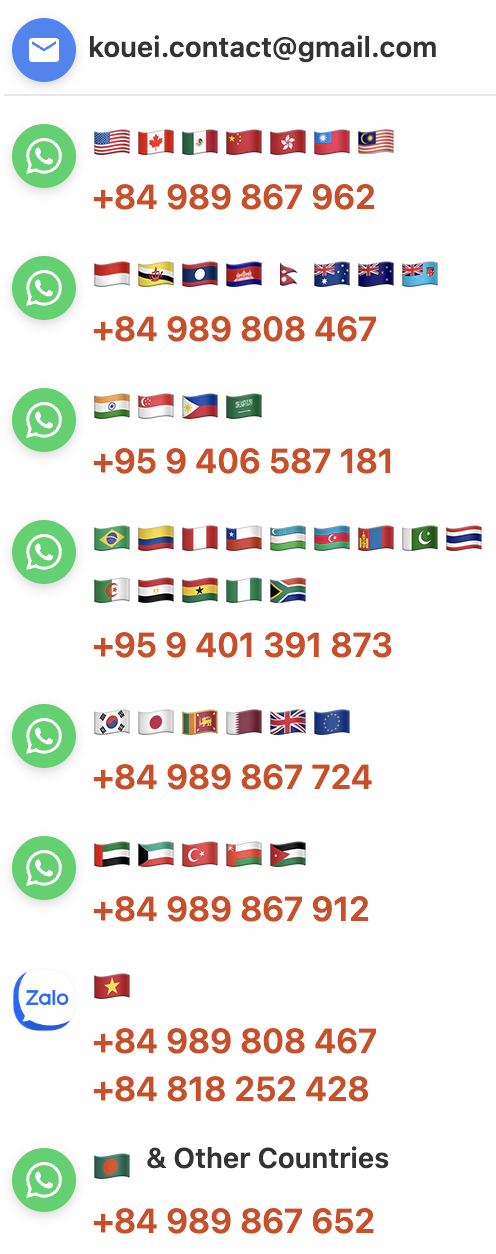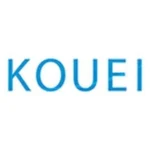Seiko Time Creation Inc.
Seiko Time Creation CT-2000II Sports Printer
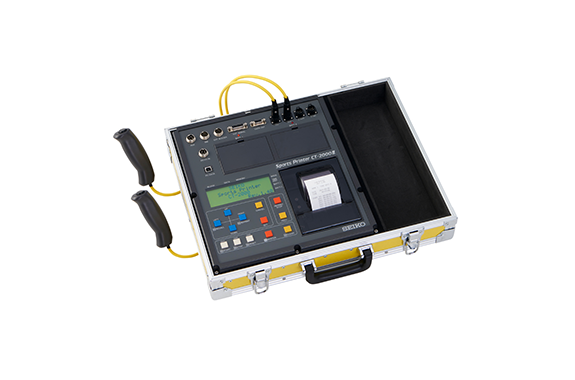
Manufacturer: Seiko Time Creation Inc.
Model: CT-2000II
Features
The SEIKO Sports Printer CT-2000II serves as a multi-purpose printer/timer used for various sports events requiring timing, such as track and road running races, swimming, skiing, and skating.
Overview
The CT-2000II offers multiple timing modes for various sports events, including [Counting Mode], [Parallel Counting Mode], [Speed Measurement Mode], and more. It allows precise timing to 1/1,000 of a second with 10 selectable calculation methods, including rounding up, down, or off.
The resin case ensures high durability. When using the AC adapter, the system automatically switches to dry batteries (2 sets of 6 AA cells) in case of power failure, ensuring continuous operation. By replacing the unused battery set with new ones, the device can run continuously on dry batteries.
Rechargeable batteries replace alkaline ones, and the CT-2000II powers with an external battery (DC11V–DC14V). You must purchase dry, rechargeable, and external batteries separately, as they do not come included.
Main Functions
The Auto Measurement Mode allows measurement during individual practices, including reaction time, lap time, and split time in swimming, speed skating, track, and other races.
CT-2000II can control an external buzzer to generate a starting sound automatically.
The Time Correction Mode adjusts the scheduled start time in secondary CT-2000II units, synchronizing them with the master unit, even if the actual start time differs.
The Speed Measurement Mode calculates the average speed over a given section of the total distance.
CT-2000II is compatible with CT-1000, allowing the use of existing grip switches, extension units, synchronization cables, and scoreboard connections (except for the PC connection cable). You need optional devices.
New model with significantly upgraded functions CT-2000II
1.Counting Mode Counting Mode
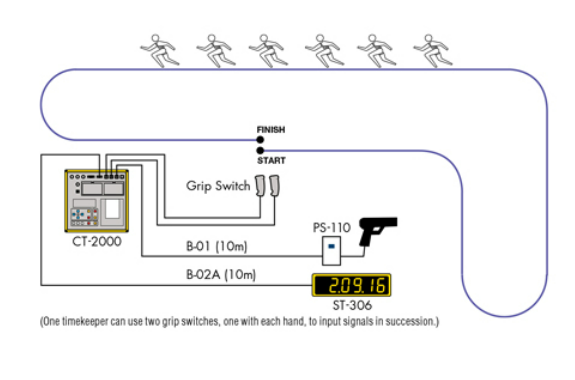
The system prints the order of arrival from 0001 to 9999, but it continues the measurement after the 9,999th racer, restarting the order from 0000 (9999 → 0000 → 0001 → 0002). It prints the order of arrival and split time each time a measurement is made from the start to the finish. The running time (time elapsed from the start) and the measured split time can be displayed on the scoreboard (ST-306, etc.).
2.Parallel Counting Mode rallel Counting Mode
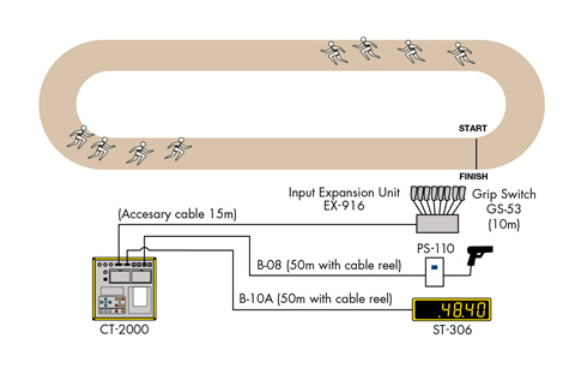
The system can measure split time lane by lane (or racer by racer). It prints out the lane number (CH No.), number of laps, and split time. TYou can also display the running time (time elapsed from the start) and the measured split time on the scoreboard (ST-306, etc.).
3.Parallel Lap/Split Time Measurement Mode
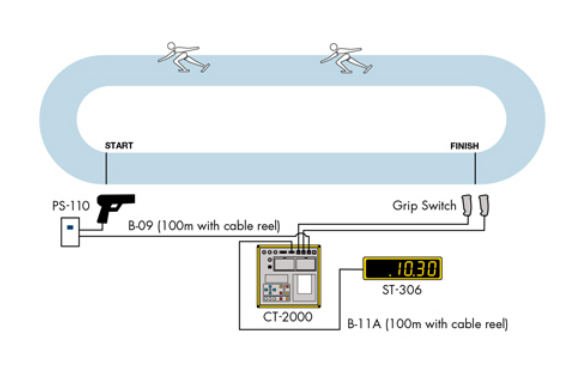
The system can measure lap times and split times lane by lane (or racer by racer). It prints out the lane number (CH No.), number of laps, lap time, and split time. You can also display the running time (time elapsed from the start) and the measured lap or split time on the scoreboard (ST-306, etc.).
4.Parallel Delayed Start Mode rallel Delayed Start Mode
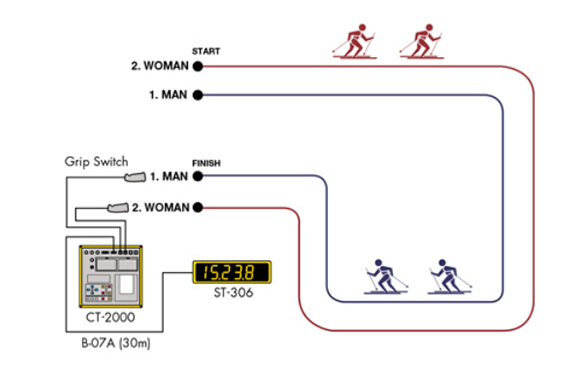
You can measure the time for each racer in a race where the racers start at different times, with certain intervals between their starts. You can record different time measurements based on the start times. The system will print out the group number, finish time (current time at the finish line), order of arrival, and split time, classified by the start time. You can also display the running time (time elapsed from the start) and the measured split time on the scoreboard (ST-306, etc.).
5.Time Correction Mode Time Correction Mode (Starting Time Difference Input )
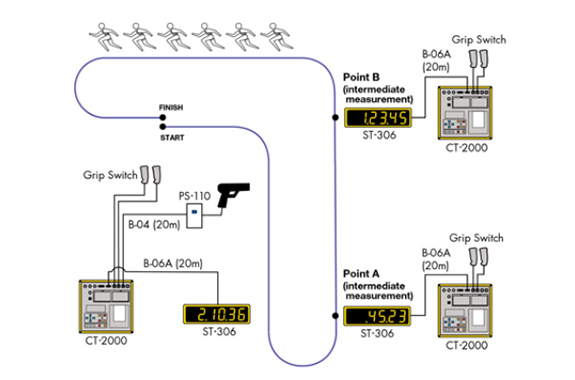
You can use this measurement mode to measure times at intermediate points on the course in events like marathons and Nordic ski races.You can synchronize the CT-2000II placed at the start point (Master) with other CT-2000II units at intermediate measurement points (Secondary). You can set the scheduled start time in advance, and input the time difference between the scheduled and actual start times into the Secondary units of the CT-2000II. The system will print out the order of arrival and split time. You can also display the running time (time elapsed from the start) and the measured split time on the scoreboard (ST-306, etc.).
6.Auto Measurement-1 Mode(Swimming Training)
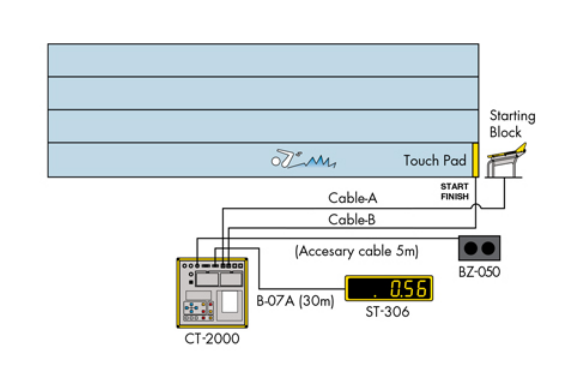
ou can measure and print out reaction time (the time from the start sound until the swimmer’s feet leave the starting block), lap time, and split time. You can display reaction time, lap time, or split time on the scoreboard (ST-306, etc.).
7.Parallel Lap/Split Time Measurement Mode(Circling Training )
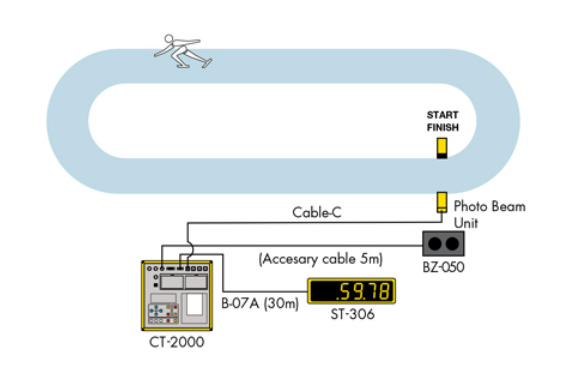
You can measure and print out lap time and split time lap by lap. You can display the lap or split time on the scoreboard (ST-306, etc.).
*In ‘Auto Measurement’ modes, you can measure the time of only one athlete at a time. You cannot measure the times of more than one athlete simultaneously.”
8.Speed Measurement Mode
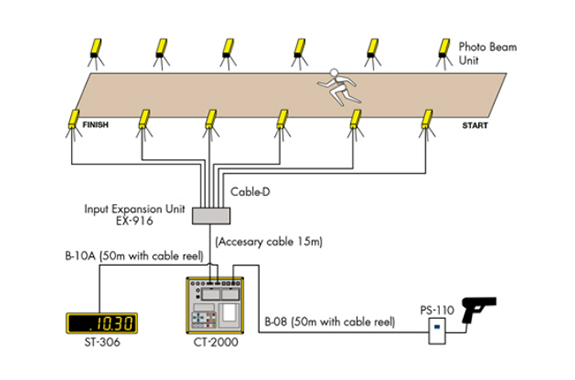
To measure the average speed over a given section of the entire distance, you can set the distance of the measurement section from 1m to 100m in 10-cm increments. Additionally, you can choose the measurement unit for speed from km/h, m/s, and mph (miles per hour).The system will print out the measured speed. You can measure speed within the range of 1–1,000 km/h, 1–250 m/s, or 1–600 mph. You can also display the measured speed on the scoreboard (ST-306, etc.).
Option
Expansion Unit EX-2000
You can expand an input channel to the maximum of 10 channels.
Grip Switch GS-51/52/53
GS-51(with 2.5m cable)
GS-52(with 5.5m cable)
GS-53(with 10m cable)
Synchronization Cable/SY-456
Ribbon Cassette/ERC-22
Roll Paper/ RP-03
System Components
| CT-2000II main body | 1 unit |
| Grip switch (with 2.5 m cable) | 2 units |
| AC adapter (with 5 m cable) | 1 unit |
| Roll paper | 1 roll |
| Ribbon cassette | 1 unit |
Specification
| Time accuracy | ±1 ppm (crystal oscillator at 25℃) |
| Max measurement duration | 23 h 59 m 59.999 s; Start time settable in h, m, s |
| Measurement unit / calculation | 10 methods: 1/1000 s (retain, round down/up/off), 1/100 s (round down/up/off), 1/10 s (round down/up/off) |
| Data/printout increments | 1/1000 s, 1/100 s, 1/10 s, 1 s depending on method |
| Input channels | Panel: 3; Connectors: 2 (up to 10 with extension) |
| Data storage | Up to 3,000 data in 100 blocks |
| Speed measurement | Section: 1–100 m (0.1 m increments); Units: km/h, mph, m/s; Range: 1–1000 km/h, 1–600 mph, 1–250 m/s; Channels: up to 10 with extension |
| Monitor display | LCD, 20×4 characters, 9.2 mm height |
| Printer section | Dot impact printer (5×7 dot, 24 chars/line); 2.5 lines/sec; Roll paper: 57.5 ±0.5 mm × 70 mm (or smaller) |
| Power supply | AC 100–240V (via adapter), Built-in 2×6 AA batteries (rechargeable OK), External DC12V (do not use AC simultaneously) |
| Battery life | Alkaline: ~8 h; NiMH rechargeable: ~14 h (at +25℃) |
| Temperature range | Operation: -5℃–+40℃ (AC: 0–40℃); Storage: -15℃–+55℃ |
| External appearance | W476 × H406.8 × D135 mm; Case: FRP/Aluminum; Panel: Resin; Weight: ~7.2 kg (excl. batteries) |
Related Products
-
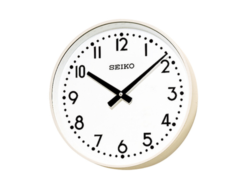
Seiko Time Creation SC-200C 260-mm Diameter Round Type
-
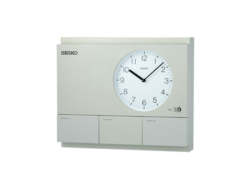
Seiko Time Creation QC-55101/QC-55102 Master Clock
-
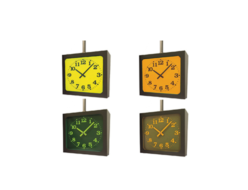
Seiko Time Creation RWS-6WHB/RWS-5WHB/RWS-4WHB Double-Faced Suspended Type
-
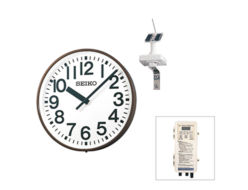
Seiko Time Creation QFC-503GNS Solar-Powered Wall Clock
-
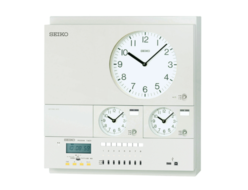
Seiko Time Creation QT-78301/QT-78302 Yearly Programmable Timer
-
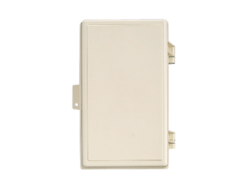
Seiko Time Creation QF-BOX Controller Case

